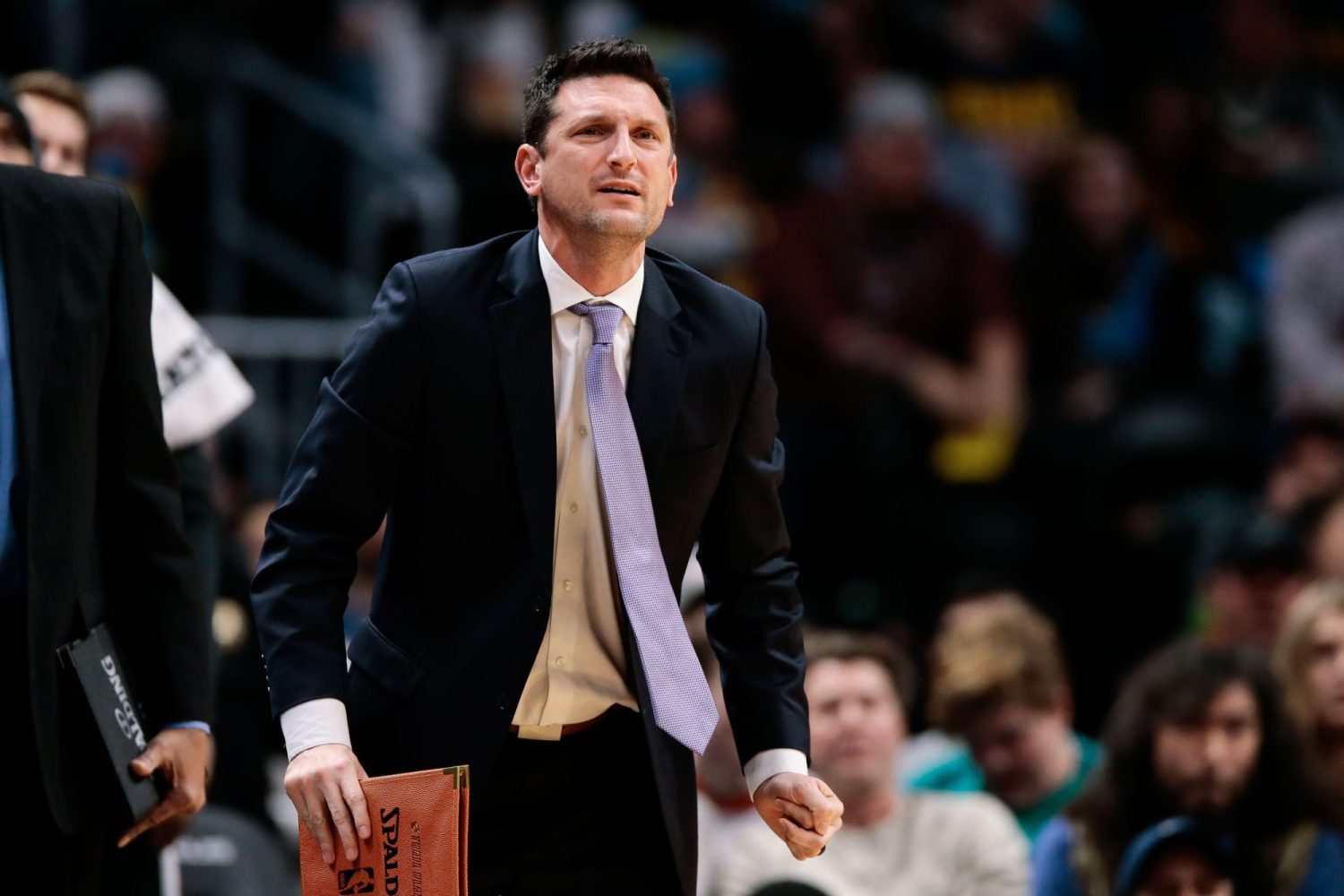
The Women’s National Basketball Association (AKA the WNBA) was founded in 1996, but has gone under appreciated and disrespected for years. Thankfully, though, it’s finally getting some long overdue, and much deserved hype. The WNBA draft drew in 2.45 million viewers, according to Sportico. The 2024 season opened with its highest attendance in 26 years, per the WNBA. And the league’s most recent All-Star Game averaged 3.442 million viewers on ABC, per Deadline, making it the largest viewership ever — signaling a massive increase in interest and support for the players. But aside from the players, much of the WNBA success stems from the coaches. So how much do WNBA coaches actually make? (We already know the player’s salaries are shockingly low.)
You may think the higher ratings, viewings, fan base, and revenue would equal high (or at least higher) salaries, but here’s the unfortunate truth: the highest-paid WNBA coaches (and players, for that matter) of 2024 are still paid significantly less than their NBA counterparts. In fact, it wasn’t until 2022 that a WNBA coach, the Las Vegas Aces’ head coach, Becky Hammon, broke through the $1 million barrier in annual salaries, according to Business Insider. Shortly after, the Phoenix Mercury head coach, Nate Tibbetts became the highest-paid coach in WNBA history earning roughly $1.2 million a year, per Front Office Sports.
Meanwhile, over at the NBA, the Golden State Warriors head coach, Steve Kerr, makes $17.5 million annually. To put that into a jarring perspective, that’s roughly 14.5 times more than the highest-paid WNBA coach. Pay inequality is not a new debate, but let that sink in.
How Much Money Do WNBA Coaches Make, Exactly?

The exact salaries of WNBA coaches are kept under wraps — we even reached out to the association itself and a spokesperson decline to comment on league financials. What we do know is that the WNBA is a private company, and each team is an independent business responsible for their employees’ salary. Each women’s team is also financed by an NBA team, Front Office Sports reports. That said, the annual salaries of the top five highest-paid WNBA coaches of 2024 ranged between $500,000 and $1.2 million.
Here’s a breakdown of the highest-paid WNBA head coaches, according to a report from Front Office Sports:
Nate Nibbetts (Phoenix Mercury): about $1.2 million per year
Becky Hammon (Las Vegas Aces): about $1 million per year
Curt Miller (Los Angeles Sparks): about $700,000 per year
Cheryl Reeve (Minnesota Lynx): about $700,000 per year
Sandy Brondello (New York Liberty): about $500,000 per year
Christie Sides (Indiana Fever): about $500,000 per year
Eric Thibault (Washington Mystics): about $500,000 per year
Not to add insult to injury, but it’s also worth noting that Nibbetts, the highest-paid coach (who is a man), has won zero WNBA championship titles, whereas Reeve (a woman), makes roughly $500,000 less per year, has won four titles.
Why Do WNBA Coaches Make So Much Less Than NBA Coaches?
That, my friend, is the multi-million-dollar question (literally). Similar to the WNBA player pay inequality, a lot boils down to salary inequity for women’s sports as a whole (just like soccer, tennis, and hockey). Historically, the gender pay gap in sports has always been a serious issue.
Why this is the case is seemingly multi-layered, but PS previously reported the two most significant factors can be attributed to less audience viewership — though if we’re being real, the WNBA receives far less airtime and media attention than the NBA — and less revenue.
The WNBA also plays 42 fewer games a season than the NBA which means reduced TV rights and media deals. To paint the picture, the NBA makes $2.6 billion annually in media rights, per Forbes, while the WNBA makes about $60 million, according to Front Office Sports. The result? Far less generated money for the women’s league.
Has There Been Any Pay Progress?
Potentially. The NBA recently secured a major media rights deal with Amazon Prime Video, NBCUniversal, and the Walt Disney Company worth $77 billion for 11 years. And $2.2 billion of the deal, or about $200 million per year, is designated to the WNBA, reports Front Office Sports. Not only will this give women’s basketball more airtime, but the hope is that the rise in viewership and money will lead to higher salaries for coaches and players.
What’s more, in 2023, the women’s league brought in more than $200 million in revenue, a 200%-plus year-over-year increase. Ticket sales for the WNBA also spiked — up 93% compared to last year, according to StubHub data.
And while the WNBA momentum is growing (some crediting rookies like Caitlin Clark and Angel Reese), coach and athlete salaries haven’t necessarily seen this cash flow. It may take years for the league to negotiate crucial deals and overall pay terms, but there is hope. The fight for fair pay in the WNBA is a long haul.




